Monday, October 26. 2009
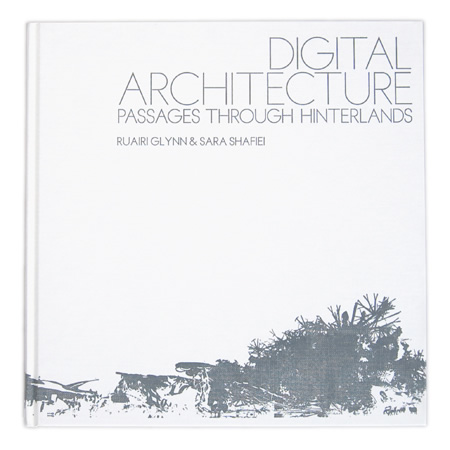
Digital Architecture: Passages Through Hinterlands is a collection of provocative projects from a young generation of digitally enabled designers. This publication oscillates between the analog and the digital, from concept to realisation, mapping processes as it explores the diverse digital paths that lead innovative spaces, poetic narratives and social interactions.
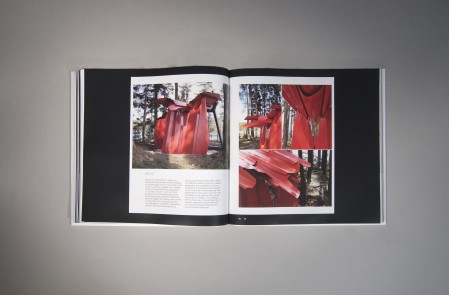
sixteen* (makers), 55/02 Shelter, Kielder Forest, UK
The book covers a spectrum of London’s leading graduates and young practices, featuring projects from the Architectural Association, Bartlett School of Architecture (UCL), University of Westminster and Royal College of Art, and case studies and interviews with architects including Amanda Levete Architects, Plasma Studio, JDS Architects, sixteen* (makers), Horhizon, marcosandmarjan, Mette Ramsgard Thomsen, Philip Beesley, David Greene, Samantha Hardingham, Usman Haque and Neil Spiller.
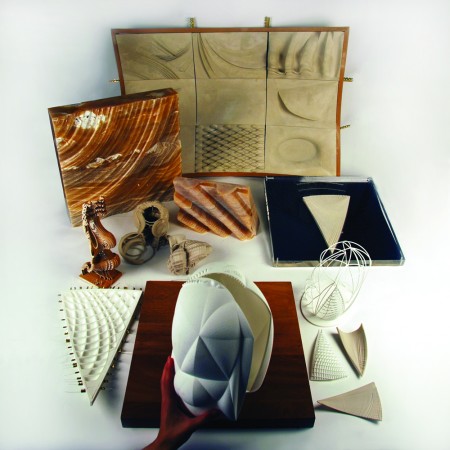
Tarek Shamma, “Circus Lumens”
I’m pleased to announce that “Digital Architecture: Passages Through Hinterlands” is now available. Co-Authored by myself (Ruairi Glynn) and Sara Shafiei it has been a real pleasure to put together a book that is intended to expand the envelope of what we might conside “Digital” Architecture to be.
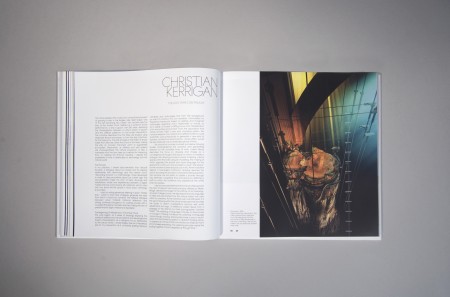
Christian Kerrigan, “The 200 Year Continuum”
I would like to thank all of the architects and artists who have contributed their inspiring work and thank our exceptional graphic designer Emily Chicken bringing it all together with such elegance.
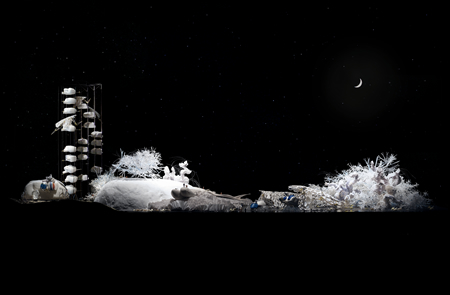
David Greene of Archigram and Samantha Hardingham’s recent L.A.W.U.N.* Project
I am also pleased to announce that one of the young graduates featuring in the book Nick Szczepaniak, has just been awarded the RIBA Silver Medal (The highest award in the UK for student design work) and we are thrilled to be the first publication to be presenting his work. More posts will follow presenting some of the other work featuring in the book and a preview of its contents can be seen here.
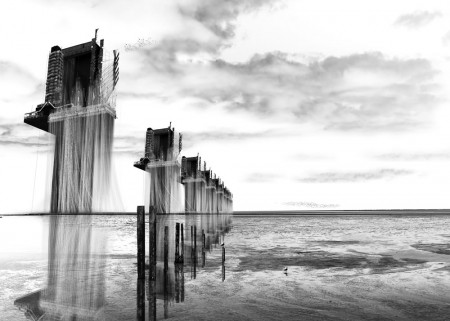
Nick Szczepaniak, “A Defensive Architecture”
Wednesday, October 21. 2009
A week or so back, a bright guy I met at PICNIC named Lincoln Schatz asked me if I mightn’t list for him a few things I’d been reading lately. I got about halfway through before I realized that I was really compiling a manifest of books I’d been consulting as I put together the pieces of my own.
So this is for you, Lincoln – but I bet it’d also be particularly valuable for readers who are coming at issues of networked urbanism from the information-technological side, and would like a better grounding in sociological, psychological, political and architectural thinking on these topics. (There’s also a pretty heavy overlap here with the curriculum Kevin Slavin and I built our ITP “Urban Computing” class around.)
Not all of these were equally useful, mind you. Some of the titles on the following list are perennial favorites of mine, or works I otherwise regard as essential; some are badly dated, and one or two are outright wank. But they’ve all contributed in some wise to my understanding of networked place and the possibilities it presents for the people who inhabit it.
Two caveats: first, this is very far from a comprehensive list, and secondly, you should know that I’ve provided the titles with Amazon referral links, so I make a few pennies if you should happen to click through and buy anything (for which I thank you). At any rate, I hope you find it useful.
UPDATE 19 October 20.49 EEDT
Thanks, everyone, for the suggestions. Please do bear in mind that, as I noted, this is not a comprehensive list of interesting urbanist books, but an attempt to account specifically for those works that have been influential on my own thinking. With a very few exceptions, I’m no longer looking for new insights, but for ways to consolidate and express those deriving from my encounter with the works listed.
That said, I’ll continue to update the page as I either remember titles that ought to have been included in the first place, or in fact do assimilate new points of view.
- Alexander, Christopher, et al.: A Pattern Language
- Ascher, Kate: The Works: Anatomy of a City
- Augé, Marc: Non-Places: Introduction to an Anthropology of Supermodernity
- Aymonino, Aldo and Valerio Paolo Mosco: Contemporary Public Space/Un-Volumetric Architecture
- BAVO, eds.: Urban Politics Now: Re-Imagining Democracy in the Neoliberal City
- Bachelard, Gaston: The Poetics of Space
- Baines, Phil and Catherine Dixon: Signs: Lettering in the Environment
- Banham, Reyner: The Architecture of the Well-Tempered Environment
- Benjamin, Walter: Selections from The Arcades Project
- Benkler, Yochai: The Wealth of Networks: How Social Production Transforms Markets and Freedom
- Borden, Iain: Skateboarding, Space and the City
- Brand, Stewart: How Buildings Learn
- Canetti, Elias: Crowds and Power
- Careri, Francesco: Walkscapes: Walking as an Aesthetic Practice
- Carter, Paul: Repressed Spaces
- Crawford, J.H.: Carfree Cities
- Davis, Mike: Planet of Slums
- De Cauter, Lieven: The Capsular Civilization
- De Certeau, Michel: Chapter VII, “Walking in the City,” from The Practice of Everyday Life
- DeLanda, Manuel: Part I, “Lavas and Magmas,” from A Thousand Years of Nonlinear History
- Design Trust For Public Space: Taxi 07: Roads Forward
- Di Cicco, Pier Giorgio: Municipal Mind: Manifestos for the Creative City
- Dourish, Paul: Where The Action Is
- Flusty, Steven: Building Paranoia
- Fruin, John J.: Pedestrian Planning and Design
- Gehl, Jan: Life Between Buildings: Using Public Space
- Goffman, Erving:
• Behavior in Public Places
• Interaction Ritual
- Graham, Stephen and Simon Marvin: Splintering Urbanism
- Greenfield, Adam (that’s me!): Everyware: The Dawning Age of Ubiquitous Computing
- Hall, Edward T.: The Hidden Dimension
- Hammett, Jerilou and Kingsley, eds.: The Suburbanization of New York
- Hara, Kenya: Designing Design
- Hardt, Michael and Antonio Negri: Empire
- Haydn, Florian and Robert Temel, eds.: Temporary Urban Spaces
- Holl, Steven, Juhani Pallasmaa and Alberto Pérez-Gómez: Questions of Perception
- Hughes, Jonathan and Simon Sadler, eds.: Non-Plan
- Ito, Mizuko, Daisuke Okabe, and Ken Anderson: “Portable Objects in Three Global Cities: The Personalization of Urban Places“
- Iwamoto, Lisa: Digital Fabrications
- Jacobs, Jane: The Death and Life of Great American Cities
- Kaijima, Momoyo, Junzo Koroda and Yoshiharu Tsukamoto: Made in Tokyo
- Kay, Alan: “User Interface: A Personal View,” in The art of human-computer interface design (Laurel, ed.)
- Kayden, Jerold S.: Privately Owned Public Space: The New York City Experience
- Kieran, Stephen and James Timberlake: Refabricating Architecture
- Klingmann, Anna: Brandscapes: Architecture in the Experience Economy
- Klooster, Thorsten, ed.: Smart Surfaces and their Application in Architecture and Design
- Latour, Bruno:
• Aramis, or: The Love of Technology
• Reassembling the Social
- Lefebvre, Henri: The Production of Space
- Lynch, Kevin: The Image Of The City
- McCullough, Malcolm: Digital Ground
- Mollerup, Per: Wayshowing: A Guide to Environmental Signage Principles and Practices
- Miller, Kristine F.: Designs on the Public
- Mitchell, William J.:
• City of Bits
• Me++: The Cyborg Self and the Networked City
- Moran, Joe: Reading the Everyday
- Mumford, Lewis: The City In History
- MVRDV: Metacity/Datatown
- Neuwirth, Robert: Shadow Cities: A Billion Squatters, A New Urban World
- Nold, Christian, ed.: Emotional Cartography: Technologies of the Self
- O’Hara, Kenton, et al., eds.: Public and Situated Displays: Social and Interactional Aspects of Shared Display Technologies
- Oldenburg, Ray: The Great Good Place
- Qiu, Jack Linchuan: Working Class Network Society
- Raban, Jonathan: Soft City
- RAMTV: Negotiate My Boundary
- Rheingold, Howard: Smart Mobs
- Rudofsky, Bernard: Streets for People
- Sadler, Simon: Archigram: Architecture without Architecture
- Sante, Luc: Low Life
- Sennett, Richard: The Uses of Disorder
- Senseable City Lab: New York Talk Exchange
- Solnit, Rebecca: Wanderlust: A History Of Walking
- Suchman, Lucy: Plans and Situated Actions
- Tuan, Yi-Fu: Space and Place
- Varnelis, Kazys, ed.: The Infrastructural City
- Wall, Alex: Victor Gruen: From Urban Shop to New City
- Waldheim, Charles, ed.: The Landscape Urbanism Reader
- Watkins, Susan M.: Clothing: The Portable Environment
- Whitely, Nigel: Reyner Banham: Historian of the Immediate Future
- Whyte, William H.: The Social Life of Small Urban Spaces
- Wood, Denis and Robert J. Beck: Home Rules
- Zardini, Mirko, ed.: Sense Of The City: An Alternate Approach to Urbanism
-----
Via Adam Greenfield Speedbird
Personal comment:
Adam Greenfield, théoricien et essayiste des questions liées à l'"urban computing", l'"ubiquitous computing", etc. publie ici une bibliographie liée à son prochain livre. Beaucoup de choses connues et de "usual suspects", mais aussi quelques noms qui le sont moins, tout au moins pour nous. Bonne ressource à creuser, si nécessaire.
Intéressant également de constater l'approche "ouverte" qu'adopte Greefield par rapport à son prochain livre, publiant régulièrement des informations ou des extraits à son propos, questionnant la "communauté" de son blog sur les thèmes abordés, etc.
Friday, October 16. 2009

I've been meaning to post more on this theme for a while - it's partly one of those entries that is really a 'note to self'. But when Timo Arnall and Jack Schulze posted their fascinating research into visualising the (otherwise invisible) characteristics of RFID last night, it prompted me to hit 'publish'.
Their research piece Immaterials is quite lovely, exploring the spatial qualities of RFID in terms of its readable volume, captured with a simple LED/sensor and camera. Here's their video, in which they explain more:
(As well as the conceptual backdrop, outlined in more detail by both Timo and Jack, I particularly like the care and attention they've given to the visualisation, and the presentation of the research. This is quality design.)
In their work I even see something of the early experiments of, say, Benjamin Franklin and Nikola Tesla in terms of understanding the behaviour of electricity, such that it can then be tamed, conducted, and put to work. It's perhaps drawing a long bow to make that comparison, but it feels like a similar sentiment. Whilst electricity is hardly invisible, there is a sense of trying to understand such immaterial phenomena through prototyping and experimentation. (And again, while some would see that as the province of science, it's also the contemporary purpose of design.)


(In this particularly fine image, we see Tesla's friend Mark Twain conducting high-frequency high voltage current, bringing a lamp to incandesce. Tesla is lurking in the background.)

Part of the purpose behind Immaterials is to understand more about RFID in terms of an emerging 'material knowledge', as Timo put it, from the designer's perspective. But perhaps also in order to raise awareness of a technology which is essentially invisible - and often feared - such that we can better understand it, and so make informed choices. It's similar to my own far sketchier work exploring the shape of the wi-fi at the State Library of Queensland (written up here) - if you could perceive the phenomenon of wireless internet as a physical space, what might it look like? (It'd be more interesting to ask what it feels like, actually.)
Despite the fact that it suggests the already massively overused term "making the invisible visible", I'm particularly interested in tapping into the content in such transactions, as well as their materiality/immateriality, as a way of understanding patterns of behaviour in what I'm calling the new soft city.
Closing the loop then means finding a way of exhibiting these invisible phenomena back in physical space. In an email exchange with Jack last night, I suggested that we might see such blooms or halos sparking as transit card-carrying passengers walk through ticket barriers in subway stations (I'm currently working on informatics for a subway project; it was front-of-mind). Jack had already put it thus:
"Having produced these visualisations, I now find myself mapping imaginary shapes to the radio enabled objects around me. I see the yellow Oyster readers with plumes of LED fluoro-green fungal blossoms hanging over them – and my Oyster card jumping between them, like a digital bee cross-pollinating with data as I travel the city."
As well as the wi-fi research, I've also been fascinated by capturing existing everyday examples of how the city assesses invisible or hidden characteristics of its infrastructure.
I've been taking photos of people who appear to be sensing the city - in the broadest, er, sense of the phrase. The following shots are from Sydney and Los Angeles, and indicate the more quotidian, prosaic activities involved in instrumenting and monitoring the city - from surveyors to telecoms operators, from vans counting passing traffic to guys probing underground pipes, from markings on streets indicating what's underneath to this peculiar footage of what looks like someone using a sonovac but is probably just a device checking for cables.
I've created a public group at Flickr called Sensing the City, so if you have similar photos, do add them there. I'd be interested to see what turns up.
While it's a very different sensibility and approach to the aforementioned explorations of radio frequencies - it's often a very material city, rather than immaterial; just hidden - in the context of discussions around instrumenting the fabric of our cities via urban informatics it's interesting to consider how much of this already occurs on our streets. And despite being marked by traffic cones and fluorescent work jackets it's become an invisible activity, somewhat ironically, for passers-by. These people are sensors.
Continue reading "Sensing the immaterial-material city" »
-----
Via City of Sound
Personal comment:
Pour faire suite aux posts précédents ... Développé sur l'essai de Timo Arnall.
I see that Dan Hill put the post from the Toward the Sentient City exhibit up at City of Sound, and that version improves on the version at Toward the Sentient City by including links and images. Reading Hill’s post again, I noticed a couple paragraphs that bear on the post below regarding architecture and “urban systems design”, which I’ll quote at length:
Gregory Weissner’s introduction indicates that the show is “intended to bring architects and urban designers into a conversation that until now has been limited largely to technologists.” He continues:
“Don’t be confused by the technology (and the terminology), though. What we are talking about is nothing short of a complete reorientation of our relationship to the built environment and the unintended consequences are not going to be all positive. Either architects and urban designers insert themselves now into the discussion about how these technologies are conceptualized and deployed or they risk diminishing the unique contributions they bring to shaping our world.”
Architecture and urban design should be in this debate, no doubt, but its entire practice, sensibility and economic model may need redressing (as with many other fields, of course.) Given their previous predilections, the lack of technical and conceptual understanding - never mind an apparently congenital inability to design a decent website - the profession has a long way to go before it can demand a seat at the table. An admittedly fading tradition of thinking of itself as the ‘master builder’ needs to be entirely excoriated once and for all. Devising the architect’s new sensibility - what Paul Dourish would describe as “the designer’s stance” for the discipline - will also be fundamentally important. Either way, complex urban systems are well beyond the ken of the sole master builder; they have been for years, but increasingly so with this ever more multi-layered understanding of the city.
Other design disciplines - interaction design, industrial design, service design, to name three - are currently far better placed to lead on these ideas, within multidisciplinary design teams. So the architect may be best-placed as part of that team, leading on spatial intelligence just as others might lead on information and communication systems, materials, structures, embodied interaction, behavioural psychology, topography, acoustics, biodiversity and so on. In a recent conversation with the SENSEable City Lab’s Carlo Ratti, we ended up sketching out a loosely multidisciplinary team in which the architect was one of perhaps ten different disciplines, all of whom would lead at various points.
Which reinforces my impression that the architect’s role in future design conversations will have less to do with a particular kind of technical expertise (as Hill points out, architects are way behind technologists in developing the technical expertise necessary to design for a sentient city) and more to do with a peculiar way of thinking (or kind of intelligence). Doesn’t do much to explain why the “spatial intelligence” architects provide is particularly useful or important, but when architects are conversing with themselves, that’s probably less important than pointing out disciplinary deficiencies.
-----
Via Mammoth
Personal comment:
Quelques remarques intéressantes ' propos de l'exposition The Sentient City organisée à NY par The Architectural League
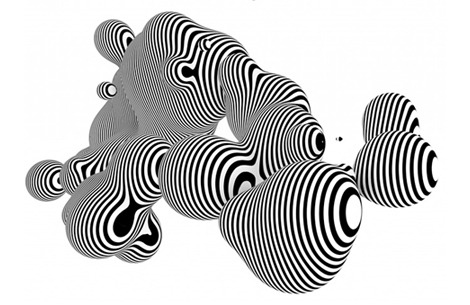
Swedish based designer Andreas Pihlstrom specialised in typography, code and movable and static shapes. The hugely talented designer is also responsible for Dropular as well as being consult designer and developer at Universal Everything.
A designer I am sure we will be hearing more of in the future, pictured is a contribution for something that hopefully will be released later next year. The meshes react differently on audible frequencies.
www.suprb.com
-----
Via It's Nice That
|







